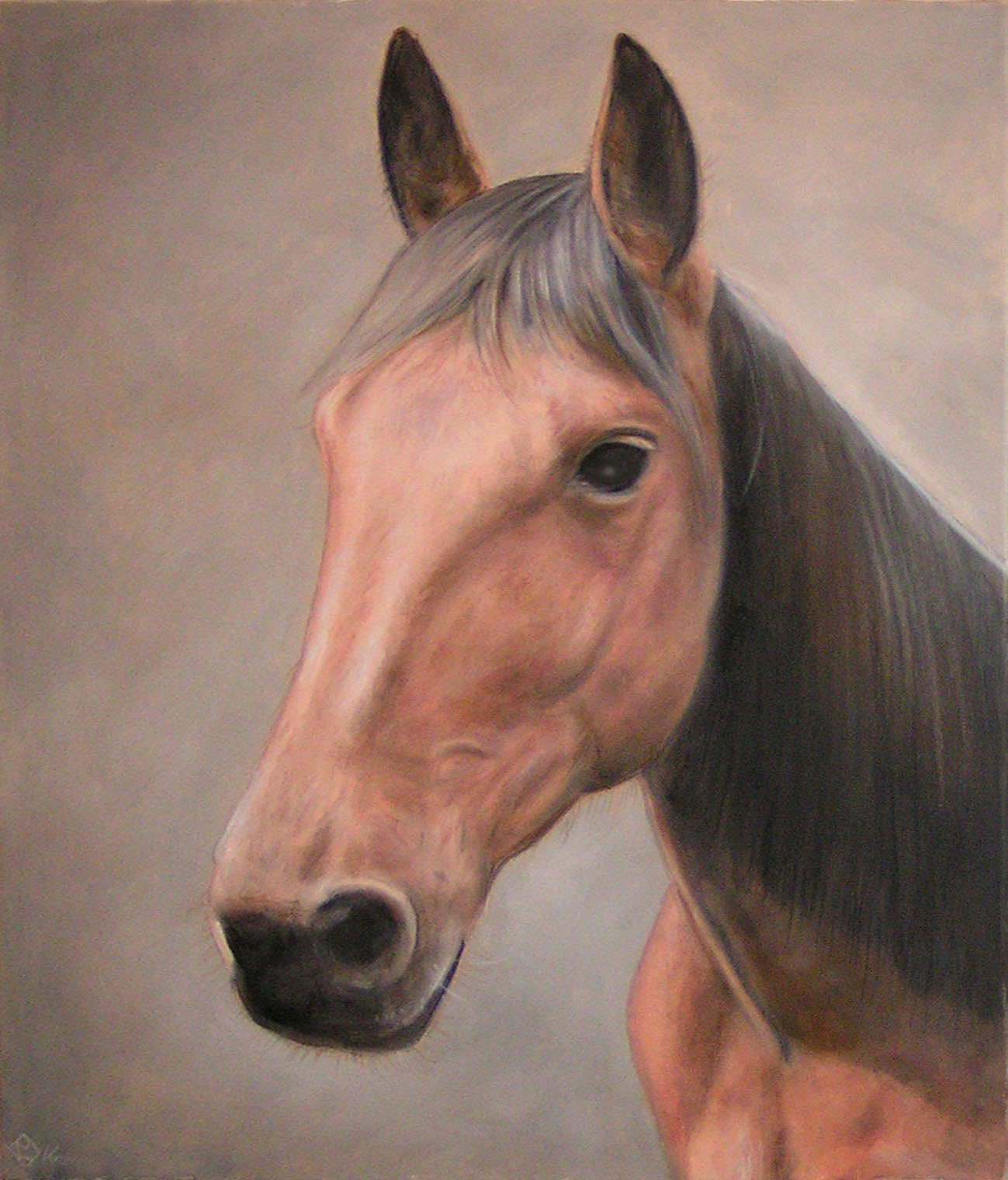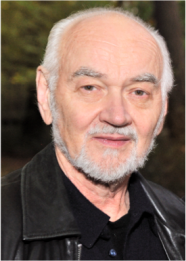
Hawkins / Emotionen
Inhaltsverzeichnis: (verbergen)

Wellenberge am Strand |
|
Das Geheimnis der Liebe ist seelische Wachheit und Freiheit, das Geheimnis von Wachheit und Freiheit aber ist der Mut. Es ist viel Mut erforderlich, die eigenen Gefühle |
|
Alle wertvollen Gefühle – für einen Menschen wie für einen Glauben, |
|
|
|
Ausagierte Wutanfälle steigern eher noch die Wut, wie auch fortgesetztes Weinen Trauer und eine depressive Grundstim-
Verschiedene Studienergebnisse – wie unter anderem die Studie des amerikanischen Psychologen Dr. Brad Bushman und
Hawkins empfiehlt, vorhandene energiezehrende Emotionen1
|
| Study (engl.): ► Study by Brad Bushman, Ph.D. et al., presented by the monthly peer-reviewed APA scientific journal Journal of Personality and Social Psychology, volume 76, no. 3, reissued in: Jennifer Daw Holloway, Advances in anger management, presented by the APA online, volume 32, no. 3. March 2003 |
| Studien: ► Emotionsbezogene Studien von Mallick und Candless (1966) und Travis (1989), "Wissenschaft und Öffentlichkeit", gelöschte PDF, präsentiert von dem Virtuellen Graduierten Kolleg (VGK), Wintersemester 2003/2004 |
Aus der Gruppe der Notstandsgefühle – Scham, Schuld, Trauer, Gier, Zorn, Stolz – nach der psychodynamischen Theorie des ungarischen Arztes und Psychoanalytikers Sándor Rádo (1890-1972), sind Scham- und Schuldgefühle die beiden Emo-
tionen, die dem Wohl aller den größten Schaden zufügen und das große Ganze am stärksten unterhöhlen.
| Siehe auch: ► Würde und ► Tabu und ► Transformation und ► Reife und ► Energieraubende Emotionen |
| See also: ► Transformation of a cynical old miser after a series of visitations |
|
| Quelle (engl.): ► Video presentation on the Four Noble Truths by H.H. Dalai Lama, Renunciation – Eliminating 'afflictive emotions', the 'enemy within', London, 1997, sponsored by the Network of Buddhist Organizations in association with the Office of Tibet, London, YouTube film, 5:36 minutes duration, posted 22. October 2009 |
| Siehe auch: ► Energie und ► Audio- und Videolinks – Dalai Lama |
| S.H. der 14. Dalai Lama empfiehlt, auf leidbringende Emotionen [sog. 'afflicted emotions'] zu verzichten. |
|
|
|
| Siehe auch: ► Bewusstsein-Tabellen und ► Skala |
|
|
|
Die vier Schritte zur Loslösung von Notstandsgefühlen2 im nichtintegeren Bereich lassen sich beispielsweise anwenden bei
Wer loslässt, wächst über seine wollüstigen Begierden und Gefühle der Scham, Schuld, Angst, Wut und des Stolzes hinaus und erreicht einen gelassenen, nicht verhafteten Zustand, in dem er gleichermaßen in Frieden ist, ob nun das Verlangen vorhanden ist oder nicht, ob es auftaucht oder verschwindet. Der Gelöste betrachtet sein Verlangen aus der Haltung der Harmlosigkeit und weiß, wann es angemessen ist und wie es angemessen zu befriedigen ist.
Um eine Bewusstseinsstufe hinter sich lassen zu können,
Beschleunigen: Die Haltung, dass die anstehenden Schatten-Empfindungen noch stärker auftauchen mögen, ist eine be- |
| Quellen (engl.): D. Hawkins, Videovorträge der Office Visit Serie, aufgenommen 1986: ► B-1 Drug Addiction and Alcoholism und ► A-8 Pain and Suffering und ► A-4 Sexuality |
| Siehe auch : ► Krankheit und ► Schmerz und ► Sexualität und ► Spirituelle Übungen und ► Sucht |
Bei emotionalen Beschwerden empfiehlt Hawkins folgende Atemübungen:
| Siehe auch: ► D. Hawkins, Licht des Alls. Die Wirklichkeit des Göttlichen, S. 328-329, 2006 |
Pferdeverhalten
Seine frontale, nicht seitlich positionierte Augenstellung weist den Menschen als Raubtier aus. Um gut auf einem Pferd reiten zu können, muss der Reiter lernen, eine friedsame innere Kraft auszustrahlen.
⚑ Anders als raubtierhafte Katzen und Hunde sind pflanzenfressende Pferde friedsame Krafttiere, besonders, wenn sie in Herden auftreten.
⚑ Als Herdentiere brauchen Pferde die Gesellschaft von anderen Pferden oder Menschen.
⚑ Als Beutetiere sind Pferde keine Opfer.
⚑ Ihre seitlich positionierten Augen ermöglichen Pferden einen 340° Panoramablick mit winzigen Blindzonen vorn und hinten. Auch ihr Gehörsinn und Geruchsinn ist vergleichs-
weise besser als die menschlichen Sinne.
⚑ Ausgestattet mit hoher emotionaler und sozialer Intelligenz nutzen die teamfähigen Tiere die Kraft der Herde.
⚑ Pferde verstehen das Paradox, dass Lebewesen zugleich getrennt und nicht getrennt sind.

⚑ Pferde sind natürliche Lehrer für die Haltung der Achtsamkeit.
⚑ Mithilfe von Emotionen als Quelle ihrer Information erspüren Pferde den inneren Zustand und die Absichten der gegenwärtigen Raubtiere.
⚑ Als friedliebende Beutetiere greifen sie Raubtiere gemeinsam mit der Herde an, ohne dauerhaft nachtragend zu sein.
⚑ Gezähmte Pferde sind den Menschen ausgesetzt, die in einem raubtierhaften System programmiert worden sind.
⚑ Menschen bringen nur 10% ihrer Gefühle sprachlich zum Ausdruck, wohingegen 90% nonverbal übermittelt werden. Pferde erspüren die 90% der nonverbal ausgesandten Emotionen.
⚑ Pferde spüren die Stimmigkeit und Authentizität in Mitlebewesen. Nur wenn Emotionen und Ausdruck kongruent sind, reagieren sie positiv.
⚑ Abweichend von der Regel der Friedliebigkeit können stark trauma-
tisierte und missbrauchte Hengste lebensbedrohliche Gewalt aus-
üben.
Machtkonstellationen
⚑ Dominanz kann als friedsame oder raubtierhafte Form der Macht ausgedrückt werden.
⚑ Das dominante Tier und das (meistens weibliche) Leittier in der Herde, das die stärkste Präsenz hat, am umsichtigsten und fürsorglichsten ist und die Gemeinschaft am meisten fördert, sind vielfach zwei verschiedene Herdenmitglieder.
⚑ In der Natur gibt es innerhalb und zwischen den Spezies gegenseitige Unterstützung (Kooperation), Vermeidung von Konkurrenzkämpfen und friedsame Führung. Es ist ein essentieller Faktor zur Sicherung des Überlebens und Gedeihens
aller bedeutsamen Arten von Lebewesen.
⚑ Getragen von sozialer Intelligenz praktiziert die Herde ein friedsames Macht-miteinander, das die Mitglieder der Gemein-
schaft weder dominiert noch überrumpelt, noch erzeugt es das "einsame Wolf"-Syndrom. Es gewährt allen Beteiligten eine deutlich größere Funktionsvielfalt, Kreativität und Neuerungen.
| |||||||||||||||||||||||||||||||||||||||||
| Quellen (engl.) von und mit Linda Kohanov (*1950) US-amerikanische Reitlehrerin, Pferdetrainerin, Dozentin, Autorin ► Audiointerview Equine Magic With Linda Kohanov, Spielberg's War Horse, Happy Trails Sag, präsentiert von der US-amerikanischen Radiosendung des Gastgebers Robert Phoenix, 102:14 Minuten Dauer, Sendetermin 21. Dezember 2011 Vierstufige effektive Nutzung von Emotionen ► Gesprochenes Lehrvideo The Power of The Herd: A Nonpredatory Approach to Social Intelligence, Leadership, and Innovation [Macht der Herde. Friedsamer Ansatz der sozialen Intelligenz, Führung und Erneuerung], YouTube Film, 4:30 Minuten Dauer, eingestellt 29. März 2013 ► Audiointerview The Power of the Herd; Non-Predatory Power and Horse Sense [Die Macht der Herde. Friedsame Macht und Pferdeweisheit], präsentiert von der The Rob Kall Bottom Up Radio Show, Gastgeber Rob Kall, US-amerikanischer Radiosprecher, 1:30:21 Dauer, Podcast gesendet 18. Juli 2013 Die eigene Kraft annehmen, um mit einem traumatisierten gewalttätigen Hengst zu arbeiten ► Audiointerview Linda Kohanov, präsentiert von dem US-amerikanischen Velocity Radio, Kim Baker Show, Gastgeberin Kim Baker, Sendetermin 18. Juni 2013, YouTube Film, 13:01 Minuten Dauer, eingestellt 19. Juli 2013 ► Videointerview The Power of the Herd [Die Macht der Herde], präsentiert von New World Library, Gastgeberin Monique Muhlencamp, Werbeleiterin, YouTube Film, 13:06 Minuten Dauer, eingestellt 13. Juni 2013 Den Unterschied zwischen raubtierhafter Dominationsmacht und friedsamer Wirkmacht verstehen lernen ► Videointerview Eponaquest "POWER OF THE HERD" Linda Kohanov in Deutschland, Barockreitzentrum Heimsheim, Deutschland, aufgenommen 6. September 2014, YouTube film, 7:21 minutes duration, posted 6. January 2015 ► Audiointerview Learning From Horses and Master Herders [Von Pferden und Meisterhirten], MP3, präsentiert von der The Rob Kall Bottom Up Radio Show, Gastgeber Rob Kall, US-amerikanischer Radiosprecher, 1:04:33 Dauer, Podcast gesendet 4. January 2017 |
| Siehe auch: ► Informationszeitalter ⇒ Konzeptuelles Zeitalter – Daniel Pink ► Führen und ► Gesetz 3:1 |
| See also: ► Innate horse wisdom – Four stages of effective usage of emotions |
|
Missbrauchsverhalten des Täters
Missbrauchsverhalten des Opfers
|

Personal avowal – extreme experience during World War II

Dr. Hawkins asked his patients to quit sugar and alcohol completely before their first appointment with him resulting in 25% of them being cured before they saw him.

Persönliche Bekenntnisse
Empfehlungen
Empörung
Schlussfolgerungen
Einsichten

Die US-amerikanische Neuroanatomikerin Dr. Jill Bolte Taylor erlitt mit 37 Jahren einen heftigen AVM-Schlaganfall, der ihre linke Gehirnhälfte vollständig ausschaltete und ihr altes Selbst sterben ließ. Ihre rechte Gehirnhälfte blieb intakt und gewährte ihr die Erfahrung von Glückseligkeit und tiefem Frieden.
Unter der achtsam-intuitiven Pflege ihrer Mutter genas Taylor vollständig nach acht Jahren. Ein Wunder! Sie konnte wieder beidseitig Gehirn und Körper koordinieren, sich erinnern, gehen, fließend sprechen und schreiben. Als gewandelte Frau, die mitfühlender geworden ist, konzentriert sie sich darauf, beide Gehirnhälften ausgewogen einzusetzen und friedlich zu leben. Deshalb befolgt sie die 90-Sekunden-Regel.
Facht man Ärger durch zornige Gedanken und Taten an, so nistet er sich im Gehirn ein.
|
|
?utm_source=telegram&utm_medium=social

|
Literaturzitate
Personal avowals
Recommendations
Once the emotional wave has ebbed, clarity may rise.

Conclusions
In the course of his prolonged discussions with H.H. the Dalai Lama the US American anthropologist and psycho-
logist Paul Ekman, Ph.D. has changed his formerly held position on the function of hatred and ridicule.
Implicit memory (the capacity to reflexively remember) and explicit memory (the capacity to reflectively recall)

Dr. Jill Bolte Taylor has recovered miraculously from a rare stroke after eight years. She who has become more compassionate than in her first life shares on the "90 Seconds Rule" and the physiological wiring of anger. Being angry is a loop, a circuitry inside the brain, restimulated by one's angry thoughts.

|
Recommendations

Western bias
Conclusions

| Source: ► Candace Pert (1946- 2013) US American neuropharmacologist, neuropsychoimmunologist, author, Molecules of Emotion. The Science Behind Mind-Body Medicine. Why You Feel the Way You Feel, Scribner, 1st Touchstone edition, 17. February 1999 |

| ||||||||||||||||||||||||||||||||||||||||||||||||||||||||||||||||||||||||
|
| Sources featuring Jaak Panksepp, Ph.D. (1943-2017) Estonian-born American professor of psychology, Bowling Green State University, psychobiologist, neuroscientist, College of Veterinary Medicine, Washington State University, author ► [*] Vimeo video presentation Social Emotion Systems of Mammalian Brains and Vicissitude of Early Social Bonds: The Transformation of Social Delight to Grief, Depression and Despair, sponsored by the convention "Human Nature and Early Experience", host University of Notre Dame Continuing Education Center, 10.-12. October 2010, 1:03:0 duration, posted 14. December 2010 Damasio's Brain imaging 2000, confirming the four classic temperaments, minute 38:24 ► Video interview Why do rats laugh?, presented by Braincast, host Arvid Leyh (*1968) German science journalist, editor-in-chief of DasGehirn.info, podcaster, author, sponsored by "Languages of Emotion Cluster of Excellence", Freie Universität Berlin, June 2011, YouTube film, 1:00:55 duration, posted 19. July 2012 ► Vimeo video presentation The social affective foundations of mind: from depressive psychic pain to primal joy, sponsored by the organization conferências do cinquentenário, ISPA, Lisboa, Portugal, 16. November 2012, 1:44:36 duration, posted 27. December 2012 ► [*] Video interview From psychiatric ward to understanding happyness, presented by TeaMe, Estonian Research Council, YouTube film, 1:05:01 minutes duration, posted 10. January 2013 ► Video presentation The science of emotions, sponsored by the TEDx program, TEDxRainier, Seattle, Washington, recorded 9. November 2013, YouTube film, 17:39 minutes duration, posted 13. January 2014 |
| See also: ► [*] Biology of the three basic mating drives of human/animal pair bonding – Helen Fisher |
The American professor of psychology Paul Ekman is considered as one of the 100 most eminent psychologists of the twentieth century. As a result of his research on human emotions he listed following basic positive and negative emotions,
not all of which are encoded in facial muscles:
| ||||||||||||||
| ||||||||||||||||||||||||||||||||||||||||||||||||||||||
| See also: ► Map of Consciousness by ⚡ Dr. David R. Hawkins ► Signs of the zodiac – Alchemical process ► Chakras – Alchemical process ► Astrology and ► Hermes Trismegistos |
| ||||||||||
| ||||||||||||||||||||||||||||||||||||||||||||
| ||||||||||||||||||||||||||||||||||||||||||||
| Sources featuring Mario Martinez, PsyD, Uruguaian clinical neuropsychologist, contemplative psychologist, psycho-neuroimmunologist, author ► Audio interview Mind Body Code, presented by the US American radio broadcasting company CBS Radio (2005-2017), host KG Stiles, YouTube film, 9:59 minutes duration, aired 20. April 2010 ► Video presentation Embodying The Four Immeasurables, YouTube film, 1:48:40 duration, posted 22. July 2011 ► Audio interview How the Mind Wounds & Heals the Body, presented by the US American radio broadcasting company CBS Radio (2005-2017), host KG Stiles, YouTube film, 21:46 minutes duration, aired 14. November 2012 ► Audio presentation The Covenant of Safety, podcast MP3, presented by the US American multimedia publishing company Sounds True, Insights at the Edge, host Tami Simon (*1953) US American founder and director of Sounds True, 10:21 minutes duration, aired 31. November 2012 ► Audio interview Dr Mario Martinez, neuropsychologist, on his book: The Mind Body Code, presented by the YouTube platform "A Better World TV", host Mitchell J. Rabin, 1:32:49 duration, posted 6. March 2019 |
| ||||||||||||||||||||||||||||||||||||||||||||||||||||||||||||||||||||||||||
| ||||||||||||||||||||||||||||||||||||||||||||||||
| Source: ► Video interview with Robert Tennyson Stevens, US American developer and CEO of Mastery Systems Corporation, pioneer in the influence of language, imagination, facilitation, Robert Tennyson Stevens on The Language of Life, presented by the US American Conscious Media Network via Gaia TV, host Regina Meredith, minute 30:08, 37:19 minutes duration, April 2006 Subject to fee Robert Tennyson Stevens: "The language of the Hopi Indians has no word for 'now'." |
| See also: ► Consciousness-Tables |
Horse features
Their eyes, positioned frontally not laterally, express a predatory nature. Whoever wants to ride a horse well, needs to aquire an aura vibrating of non-predatory power.
⚑ Other than predatory cats and dogs are horses non-predatory power animals, especially when they live in herds.
⚑ As herd animals horses need the company of other horses or humans.
⚑ As prey animals horses are not victims.
⚑ Their sideways positioned eyes afford horses a 340° panorama sight reducing their blind zones in front and in the back to a minimum. Their senses of hearing and smell are also comparatively better than those of humans.
⚑ Horses are highly emotionally and socially intelligent team players applying the power of the herd.
⚑ Horses understand the paradox that living creatures are separate and not separate at the same time.
⚑ Horses are natural teachers for the attitude of mindfulness.
⚑ Using emotions as their source of information horses can sense the state and intentions of present predators.
⚑ As peaceful herbivores they attack predators as a herd, yet do not take further revenge.
⚑ When domesticated horses are exposed to humans programmed in a predatory system.
⚑ Among humans only 10% of the emotions are expressed verbally, whereas 90% are conveyed nonverbally. Horses are sensitive to the 90% of the nonverbally conveyed emotions.
⚑ Horses sense congruency and authenticity in another being. Only when congruent emotions are present, they respond positively.
⚑ The exception to the rule of peaceable demeanor are highly traumatised and abused stallions who may turn to life threatening violence.
Power constellations
⚑ Dominance can express itself as non-predatory or predatory forms of power.
⚑ The herd dominant and the (mostly female) herd leader, best skilled in presence, nurturing and companionship, are often two different animals.
⚑ Mutual aid (cooperation), competitiveness avoidance, and non-predatory leadership exist in nature among and between species. Indeed, it is an essential factor in the survival and success of any significant species.
⚑ The non-predatory power together in the herd expressing social intelligence skills does neither alienate others nor dominate the members of the community nor does it produce lone wolves. It uplifts everyone to a much higher functionality, creativity and innovation.
| |||||||||||||||||||||||||||||||||||||||||||||
| |||||||||||||||||||||||||
|
|
|
|
Historic leaders who were great horsemen dealt with aggressive, challenging stallions without resorting to violence or panicking. They've integrated the non-predatory innate wisdom teachings from the horse which enhanced their leadership presence: Buddha, Alexander the Great, Genghis Khan, Joan of Arc, Catherine the Great, George Washington, Geronimo, Winston Churchill, Ronald Reagan.
| Source: ► Narrated video by Linda Kohanov, US American riding instructor, horse trainer, speaker, author, The Power of The Herd: A Nonpredatory Approach to Social Intelligence, Leadership, and Innovation, YouTube film, 4:30 minutes duration, posted 29. March 2013 |
| Literature by Linda Kohanov (*1950) US American riding instructor, horse trainer, speaker, author ► The Power of the Herd. A Nonpredatory Approach to Social Intelligence, Leadership, and Innovation, New World Library, 1st edition 5. March 2013 ► The Five Roles of a Master Herder. A Revolutionary Model for Socially Intelligent Leadership, New World Library, 14. June 2016 |
| Media sources featuring Linda Kohanov (*1950) US American riding instructor, horse trainer, speaker, author ► Audio interview Equine Magic With Linda Kohanov, Spielberg's War Horse, Happy Trails Sag, presented by the US American radio show of host Robert Phoenix, minute 16:30, 102:14 minutes duration, aired 21. December 2011 Four stages of effective usage of emotions ► Audio interview The Power of the Herd; Non-Predatory Power and Horse Sense, presented by The Rob Kall Bottom Up Radio Show, host Rob Kall, US American radio host, 1:30:21 duration, podcast aired 18. July 2013 Becoming powerful in order to work with a traumatized violent stallion ► Audio interview Linda Kohanov, presented by the US American Velocity Radio, Kim Baker Show, host Kim Baker, aired 18. June 2013, YouTube film, 13:01 minutes duration, posted 19. July 2013 ► Video interview The Power of the Herd, presented by New World Library, host Monique Muhlencamp, publicity director, YouTube film, 13:06 minutes duration, posted 13. June 2013 Understanding the difference between predatory and non-predatory power ► Video interview Eponaquest "POWER OF THE HERD" Linda Kohanov in Deutschland, Barockreitzentrum Heimsheim, Deutschland, recorded 6. September 2014, YouTube film, 7:21 minutes duration, posted 6. January 2015 ► Video interview Linda Kohanov talks about THE FIVE ROLES OF A MASTER HERDER, presented by Californian publisher New World Library, host Monique Muhlencamp, publicity director, YouTube film, 10:44 minutes duration, posted 19. July 2016 ► Audio interview Learning From Horses and Master Herders, MP3, presented by The Rob Kall Bottom Up Radio Show, host Rob Kall, US American radio host, 1:30:21 duration, podcast aired 4. January 2017 |
| |||||||||||||||||
| Source: ► Frédéric Pignon, French horse whisperer, liberty trainer, equestrian artist, The Six Golden Principles of Horse Training, presented by "Equisearch", 29. October 2009, published in EQUUS magazine, issue November 2009, reissued 10. March 2017 |
| Reference – Book (German): ► Frédéric Pignon und Magali Delgado, französisches Freiheitsdressur-Ehepaar, Cavalia Pferdedressurkünstler, Achtung/Würde/Respekt. Goldene Trainingsprinzipien in der Pferdeausbildung, Wu Wei Verlag, Schondorf, 1. Juni 2010 |
| Reference – Video (German/engl.): ► Gespräch mit Linda Tellington-Jones (*1937) kanadische Tiertrainerin, Entwicklerin der Tellington-Jones Equine Awareness Method (T.E.A.M.), 1975, Frédéric Pignon und Magali Delgado, französisches Freiheitsdressur-Ehepaar, Cavalia Pferdedressurkünstler, Linda Tellington-Jones, Magali Delgado und Frederic Pignon, veranstaltet von Weltmesse des Pferdesports EQUITANA 2013, Moderatorin und Übersetzerin Ingvil-Ann Schirling, YouTube Film, 34:49 Minuten Dauer, eingestellt von myhorsechannel1 17. März 2013 |
| |||||||||||||||||||||||||||||||||||||||||||||||
| Source: ► Ian Xel Lungold (1949-2005) US American time researcher |
| See also: ► Step models |
Change of emotional states comes by choice.
| Orientiert u.a. an: D. Hawkins, Erleuchtung ist möglich. Wie man die Ebenen des Bewusstseins durchschreitet, S. 231-232, 2007 |
Englische Werke
Links zum Thema Emotionen / EmotionsLiteratur
Sedona Methode, Verfahren zur Stressreduktion (BW 450), entwickelt von ⚡ Lester Levenson [BW 505→180] (1910-1994) US-amerikanischer Physiker, Unternehmer, Begründer der Release Technique/"Sedona Method" (zur Stressbefreiung) [BW 490], Kultführer.
Literature (engl.)
Wikipedia entry: Descartes' Error
Affective neuroscience studying brain structures, brain functions, and neurochemicals found seven primary emotions: 3 negative emotions: Panic/Grief/Sadness ♦ Fear ♦ Anger/Rage; 3 positive emotions: Seeking/Desire/Foraging ♦ Lust/Satisfaction and pleasure ♦ Care/Nurturing ♦ Play/Joy (Laughter). PLAY builds the skills for thriving relationships, whereas SEEKING motivates to take action.
Externe Weblinks
Emotionen (von Mimik bis zu Hormonen) sind mächtige Bewertungssysteme, die ermöglichen, viele Situationen automatisch einzuschätzen, Links zum Thema Emotionen – QuoraBeiträge verfasst von Elfriede Ammann, präsentiert auf der kalifornischen Frage-und-Antwort Webseite Quora DE
External web links (engl.)
Lists provided by Ortony and Turner, 1990; Shaver et al., 2001
Dr. Paul Ekman points out to become aware of the role of emotions in one's decision-making. "It's a system that evolved to deal with really important things without your thinking about it." It takes mindfulness to outsmart the emotional system. Only ~10% of the population is able to activate the muscles around the eyes that are required for self-generating happiness.
Three tests of acceptance
1 Admiration Audio- und Videolinks
Audio and video links (engl.)
Lecture on the Four Noble Truths: 1. Life is suffering. 2. Suffering is caused by craving. 3. Suffering will end when you stop craving. 4. To stop craving, practice self-control by adopt an ethical existence.
On the Sedona Method releasing one's non-love feelings, invented by ⚡ Lester Levenson [LoC 505→180] (1910-1994) US American physicist, enterpreneur, founder of the Release Technique/"Sedona Method" [LoC 490], cult leader
Emotional and social intelligence improve the performance of the leader, the coworkers and organization.
Research about the neuroscience of emotions, attachment, communication and emotional regulation
12 phrases that low EQ / passive aggressive people say Audio and video links (engl.) – Jaak PankseppAudios and videos – Research of primary emotions by Jaak Panksepp, Ph.D. (1943-2017) Estonian-born American professor of psychology, Bowling Green State University, psychobiologist, neuroscientist, College of Veterinary Medicine, Washington State University, author
| ||||||||||||||||||||||||||||||||||||||||||||||||||||||||||||||||||
Wiki-Ebene
Englisch Wiki
1 Energieraubende, unlautere Emotionen ⇑
2 Energieraubende Emotionen ⇑
3 Brain reward system, observed by James Olds (1922-1976) and Peter Milner, 1953, published 1954 ⇑
4 Video interview on 'seeking the Internet' with Jaak Panksepp, Ph.D. (1943-2017) Estonian-born American professor of psychology, Bowling Green State University, psychobiologist, neuroscientist, College of Veterinary Medicine, Washington State University, author, Jaak Panksepp on the brain and searching the web, presented by "Dear reader", see article Washington State Magazine, summer 2010, YouTube film, 2:34 minute, posted 5. May 2010 ⇑
8 Extensively studied in behaviorist scientific literature ⇑
9 Extensively studied in philosophic scientific literature ⇑
10 Energieraubende, unlautere Emotionen ⇑